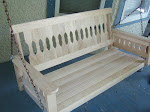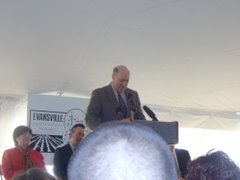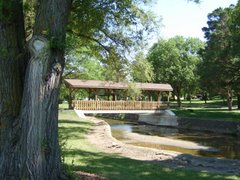Why Don’t We Have Winter Anymore?
How many times have you heard someone say something like, “You know, I remember back when winters were a lot colder – it would go down to zero and stay there for six weeks. But that just doesn’t happen anymore.” How many times have you said something like that? I’m betting you have because one hears statements like this a lot, from young and old, from persons in all walks of life – every winter. It doesn’t matter if the current winter is mild or harsh – it seems to be a constant winter weather theme in casual conversation. I heard the above quote about 30 years ago from an elderly gentleman who presumably lived nearly all his life in southeastern Kansas. Kansas? Zero for six weeks? What’s up with that? Are winters really warmer than they used to be? What about snow? Didn’t we always used to get dumped on? I know you have stories about snow tunnels and drifts higher than your head and roads that were closed half the time and such like. Where did all those good times go?
Well, I propose to you that winters have not changed all that much over the past 100 years, at least not in our neck of the woods, that being the upper Midwest of the US. Not that we’ve never experienced extended cold snaps or blizzards or drifts higher than our heads (how tall were you in 1960?) because we have. Just not all the time, not every winter, not even close. It was never normal.
What I’d like to do is use temperature data from Minneapolis, MN as a proxy for the entire region. The National Weather Service Office there has a great website where they’ve posted a variety of daily, monthly, and yearly weather observations and averages. Digital data from other cities are certainly available but I’m loath to pay the Climate Data Center (or one of their contractors) for it. From data that I’ve cobbled together from various on-line sources and older printed material, I’ll try to show two things: 1) that the variability in the Minneapolis temperature records is representative of our region, and 2) that winter temperatures and snowfall are extremely variable and are never always anything, all the time.
First, let’s look at yearly average temperatures between 1891 and 2004 plotted in Figure 1. The long-term mean is about 46F but individual years show values as high as 50.9F (1931) and as low as 40.6 (1917) and are generally all over the place between these two. There is a warming trend of about 1 degree over the period and a mild period is seen since 1998.
Figure 2 shows a portion of the previous time series for Minneapolis (blue curve) along with those of Madison, WI (red) and Fargo, ND (green). Notice how closely the Madison temperatures track those of Minneapolis, though most years are about 1.5F to 2F warmer. Fargo shows a slightly lesser correspondence, but colder by 3F or 4F. The main point here is that the variability and direction of change from year-to-year in Minneapolis is very similar to other regions in the upper Midwest and may be used to broadly infer long-term temperature variations region-wide. But this isn’t winter, specifically, so have a look at Figure 3 where only January temperatures are shown but in the same way for the same cities. The former conclusions apply here but the variation from year-to-year for a single month is greater than over an entire year. Monthly mean temperatures may change by over 10F from one January to the next, as in Minneapolis from 1976 to 1977 (11.6F to 0.3F). Or check out Fargo from 1943 to 1944 (-1.3F to +21.1). January temperatures are not consistently “cold” from year to year. The only constant seems to be the variability.
So, you probably see where this is leading. Figures 4-6 show Minneapolis monthly mean temperatures from 1891-2004 for December, January, and February. The same magnitudes of variations are seen as before, but more interestingly, the trend lines for December and January are practically flat! Not even a trend towards warmer weather (over the entire period). However, if you look for the coldest 10 Januarys in the entire 114-year period, you see that 5 of these occurred between 1963 and 1982. Also, there were no exceptionally warm (>20F) Januarys during this time, although there were 7 that had above (long-term) average temperatures (13F). Is this 20-year period the source of baby-boomers winter memories? Could be, but even in this case they would be based on only 13 out of the 20 “dead-of-winter” months. February is different and does display an upward trend leading one to surmise that some winters have been ending sooner. Only 3 of the coldest 10 Februarys occurred since 1960.
Annual snowfall totals are even more interesting. Figure 7 below shows total snowfall amounts from about 1940-1975 with Minneapolis in blue, Madison in red, and Fargo in green. The correlations are not as strong as for temperature, but the similarities in the year-to-year variations remain. In other words, most years that show higher than average snowfall in Minneapolis tend to be echoed in the other two time-series, especially Madison. The main difference seems to be that year-to-year variation in snowfall for Minneapolis is greater than for the other two cities. Also note that in many years, Madison has more snowfall than Fargo. That might come as a surprise to some folks here and some of our hardy friends to the northwest!
Now look at the entire 114-year period for Minneapolis in Figure 8, remembering that this is fairly representative of the region. A linear fit to the points yields an upward trend of nearly 20 inches! Even granting that the beginning of the trend line might not be entirely representative of the first few years, it is still an impressive change, certainly at least 15 inches. That would be about one-third of the long-term mean of 45.2 inches! The big increase happened in the 1970s and 1980s with a flatter trend since then. Figure 9 (bottom) shows annual snowfall totals for Madison from 1884-1885 to 2004-2005. The picture here is much the same, though the increase since the 1960s is perhaps not as great. There has been a falling off in recent years (since 1993), but you can see that we’ve been through these periods before. Note also that though we haven’t received over 60 inches of snow since 1995 (a snowy Madison winter by any reasonable standard), we have also not received less than 28, unlike 23 other winters spread out over the entire record. These include 1976 and 1980, which occurred in a relatively cold and snowy era. As with temperatures, our winter snowfall amounts are extremely variable and have been for as long as we’ve kept records. All those year-after-year, snowy, drifts-up-to-the-neck winters will have to be relegated to some magical, mythical past.
So what about our winters of late? Since the 1970s and early 1980s, we’ve warmed up some, but on the other hand, many of those years were colder than the long-term mean. Considering the whole period of record, there is little or no trend for Decembers and Januarys, but an overall warming during Februarys. Snowfall shows an upward trend with the caveat that the last decade has generally realized lesser amounts, but not when compared to the entire record. The main point in all of this is that snowfall and winter temperatures are extremely variable from year-to-year and have been for a long, long time. I think the reason we don’t have winter anymore is us! It is my belief that we tend to focus on those winters, or even specific weather events within certain years that were truly bitterly cold or snowy (one can make the same argument within winters that I’ve made between winters), then somehow project these memories onto other years. It would be interesting to know what this mechanism is and why we have it. Is it a universal human trait, an extension of our tendency to generalize and categorize? Anyway, now when somebody tells you about how winters in the past were always so cold and snowy, just smile and say, “Why yes, I remember those winters, too! But you know the rest of the story.
Monday, September 29, 2008
Subscribe to:
Post Comments (Atom)






























No comments:
Post a Comment